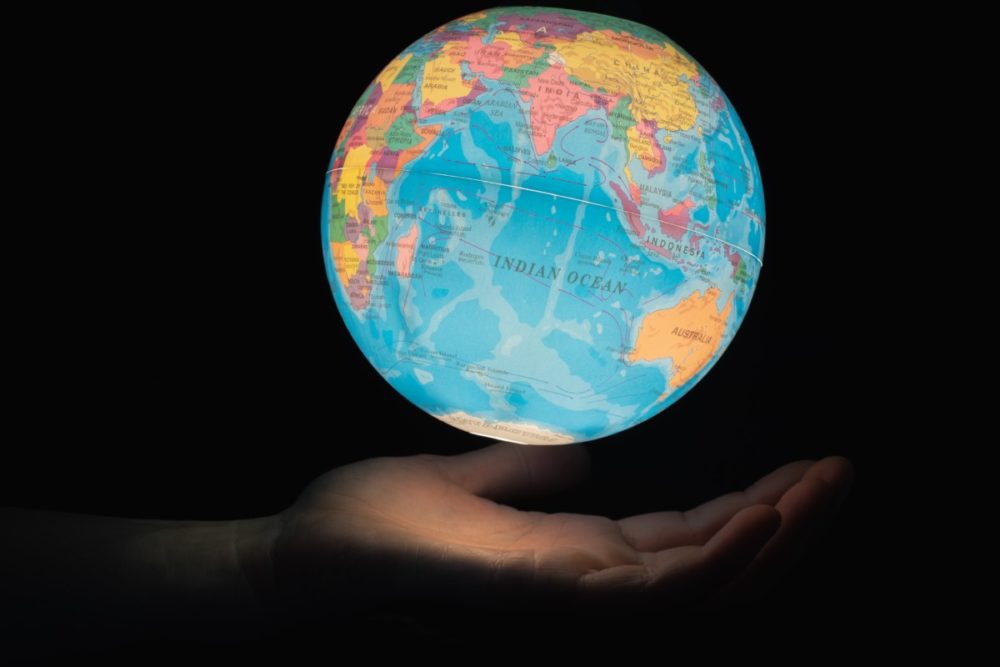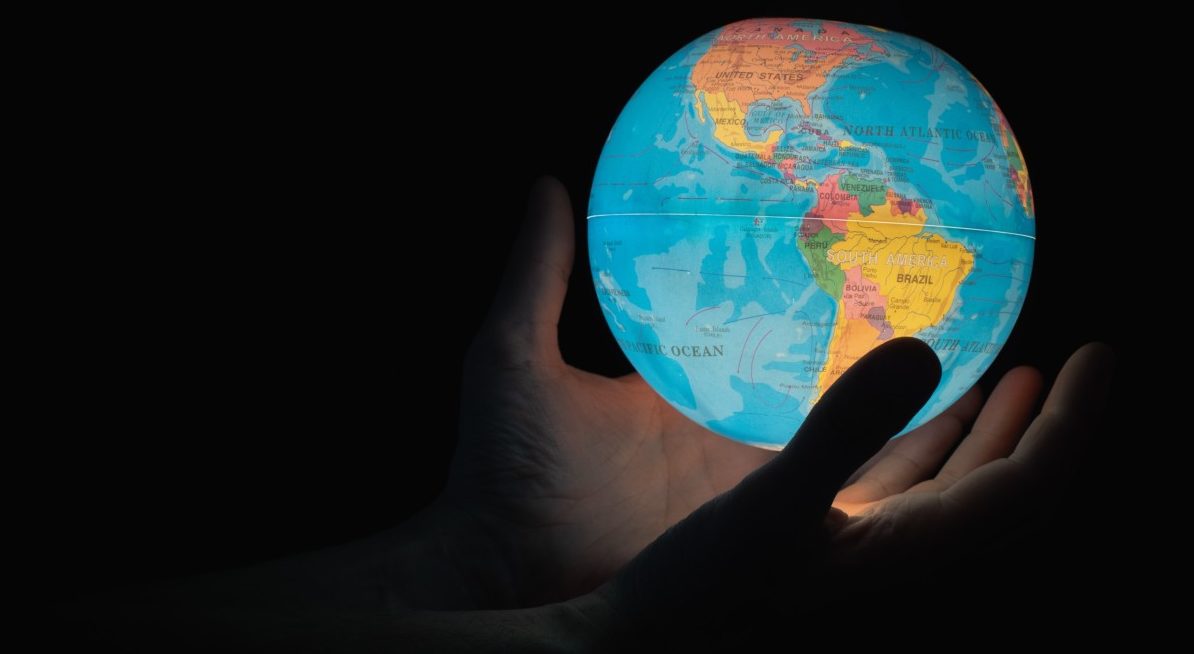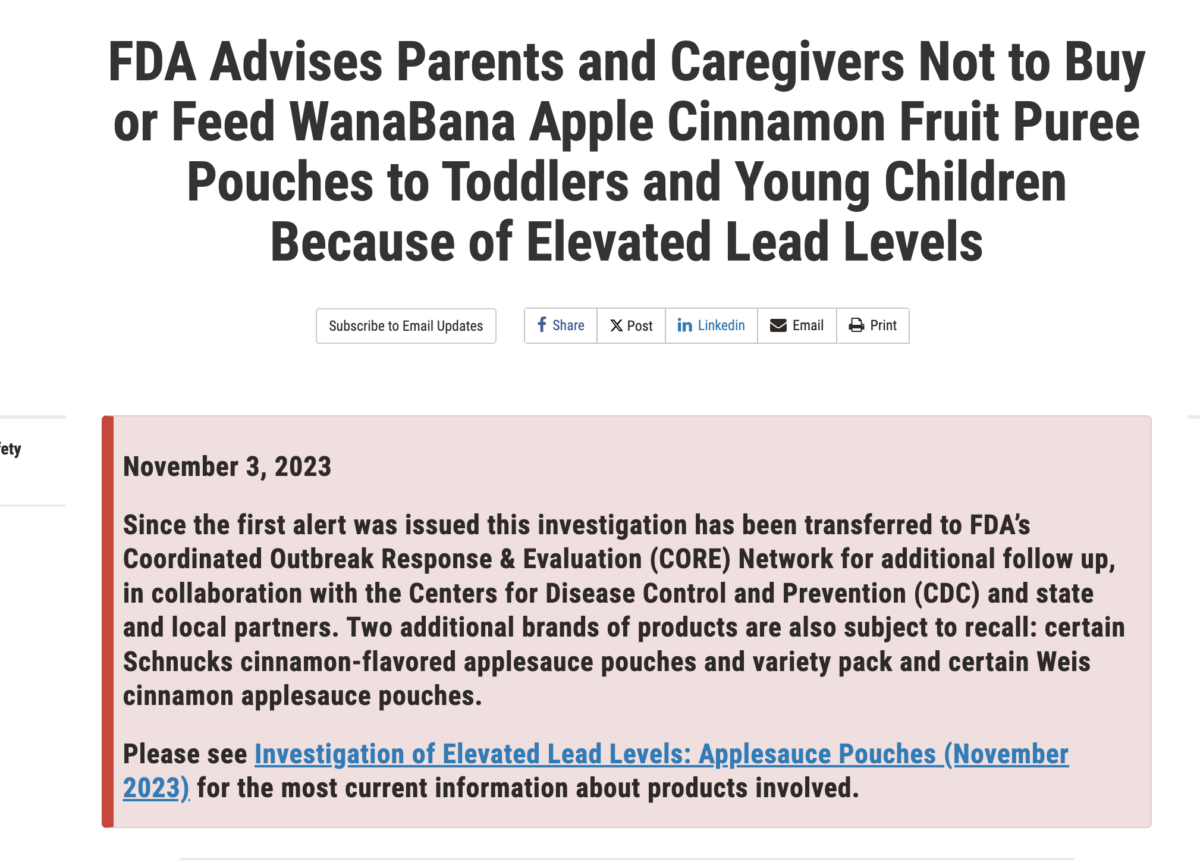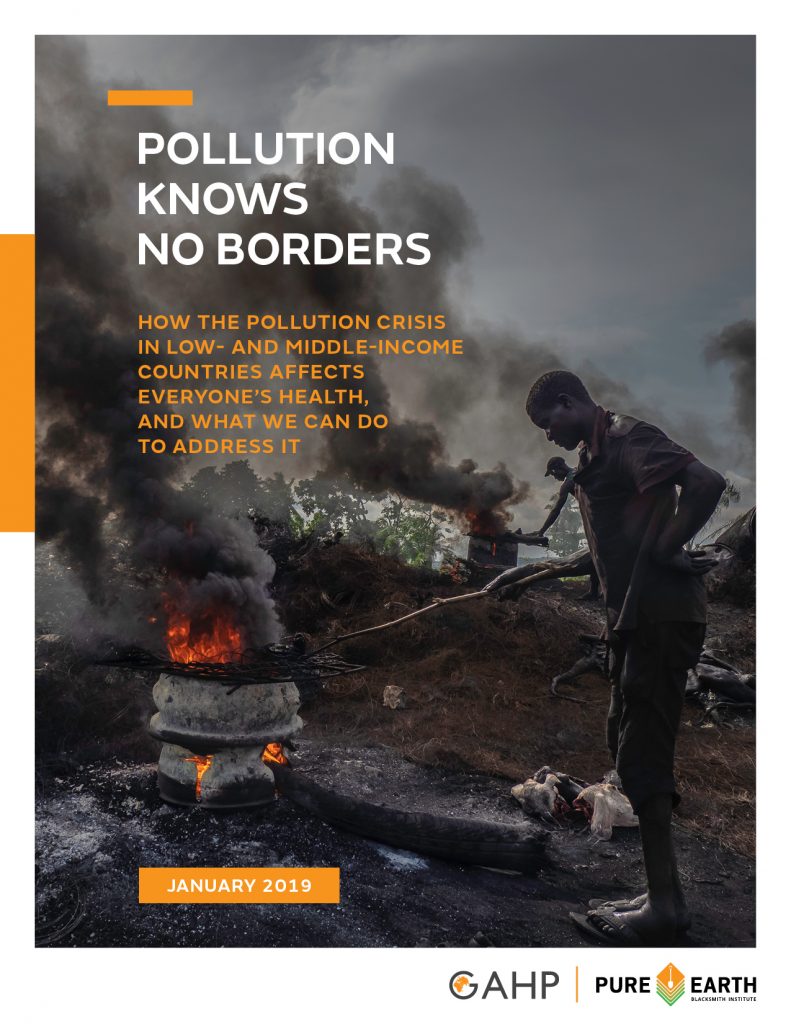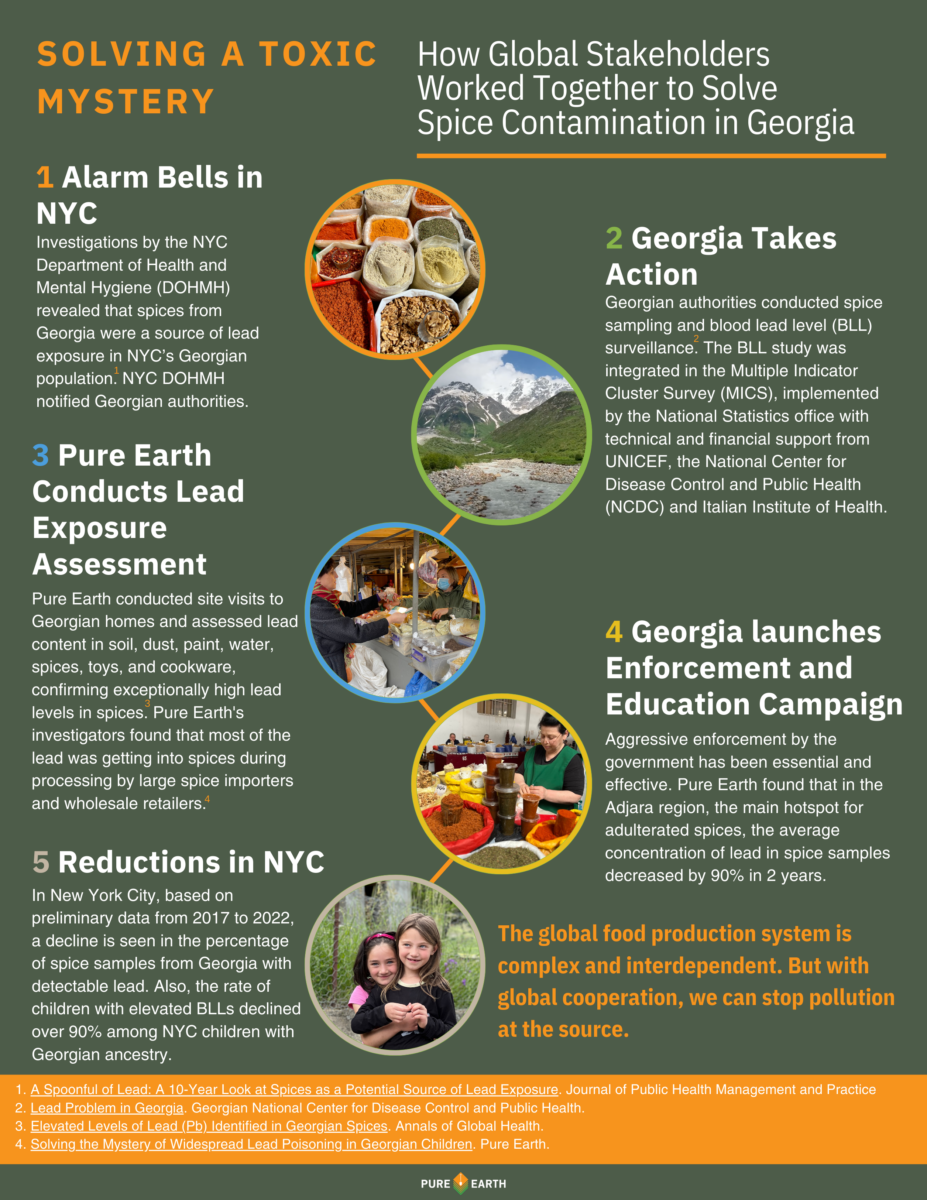The global food supply chain is impacted by pollution in low- and middle-income countries.
Lead contaminated food and heavy metals in food is preventable. Learn more about Pure Earth’s work to solve pollution at the source.
Happening Now: US Foods Contaminated with Heavy Metals From Imported Ingredients
Lead contaminated food can be the source of lead poisoning. In 2023, the US FDA recalled three cinnamon-applesauce products due to lead contamination, and urged children who ate the product(s) to have a blood test to check for possible lead exposure. The source of lead contamination is imported cinnamon, which originated in Sri Lanka and was shipped to Ecuador, where it was ground into a powder. The F.D.A. has indicated that it was likely during this process in Ecuador where the cinnamon became contaminated with lead chromate. As of March 2024, hundreds of US children in 44 states have been lead poisoned from these cinnamon-applesauce pouches.
Consumer Reports also found dangerous heavy metals in chocolate from Hershey’s, Theo, Trader Joe’s, and other popular brands.
Independent testing of popular brands of chocolate between 2014 and 2018 found levels of lead and cadmium in 96 of 127 products for sale in US that exceeded California’s maximum allowable dose.
A 2017 study found rice teething biscuits and cereal had between 61 and 92 times higher levels of mercury, and nearly ten times more arsenic than products made with wheat/oats.
Several studies have documented the increase in use of untreated industrial wastewater contaminated with toxic chemicals for crop irrigation by farmers lacking access to clean water.
Pollution Knows No Borders Report How the Pollution Crisis in Low- and Middle-Income Countries Affects Everyone’s Health, and What We Can Do to Address It
When it comes to pollution, we are all connected. Imported food products are an amalgam of ingredients originating in multiple countries. Many products have long supply chains. While the U.S., Canada and Europe have banned many toxic chemicals and pesticides, these harmful products continue to be used in factories and in agricultural production in low- and middle-income countries where environmental policies are less stringent.
Pure Earth’s 2019 Pollution Knows No Borders report details how toxic pollution travels from country to country, not only in the air and water, but also in the food and products we buy.
Toxic pollution is invisible and often takes years before the health impacts become evident but it is one of the biggest health threats we face today. There are still many domestic sources of modern pollution but increasingly our exposure comes from low and middle-income countries. That’s why it’s in everyone’s interest to advocate that pollution be addressed at the source, wherever it is around the world.—Gina McCarthy, director, Center for Climate Health and the Global Environment, Harvard University; former Administrator, US EPA
From the 2019 report:
- See how industrial pollution migrates from farm to global table
- Find out how much food we import from countries with high pollution levels
- How do you protect your family? Click here for resources or see the report.
Learn more:
- Read Scientific American’s editorial It’s Time to Get Arsenic and Other Toxic Substances out of Baby Food .
- U.S. smog can come from China? And other facts about pollution’s toxic travels.
Read the press release.
What consumers can do:
- US Consumers should be aware of the source location of the products they buy.
- The Pollution Knows No Borders report lists excellent watchdog resources for products from groups like Environment Working Group, Health and Environment Alliance – HEAL, Center for Environmental Health and Safer Chemicals, Health Families.
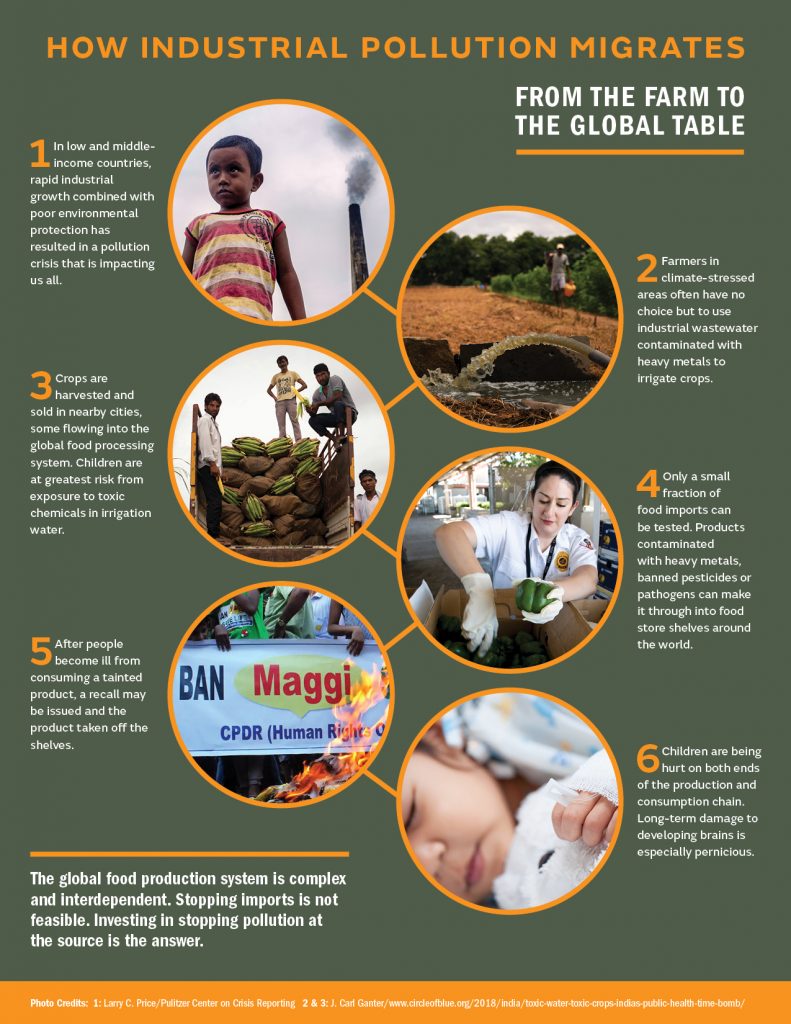
Simply adding border controls does not work, as companies importing food and products above safe levels often just re-open with another name. Besides, air and water toxic transports are not stopped at a customs gate.
Global briefing featured:
Richard Fuller President, Pure Earth
Jack Caravanos Director of Research, Pure Earth
J. Carl Ganter Co-Founder & Director, Circle of Blue
Gina McCarthy Former Administrator, EPA
Janez Potočnik Co-Chair of UN Intl. Resource Panel
Baskut Tuncak UN Special Rapporteur
You can’t solve air pollution or transboundary pollution on a country-by-country basis. It requires global cooperation to deal with the problem at the source. The good news is that international efforts underway to combat climate change will greatly reduce air pollution and improve the health of children everywhere. —Janez Potocnik, Co-Chair of UN Intl. Resource Panel
Pesticides and chemicals known to be too risky to use in the US or Europe have long been exported in large quantities to poor countries that don’t have adequate standards of protection or ability to enforce existing standards. The exploitation of these double standards for production and consumption results in huge impacts on local communities in these countries and oftentimes widespread exposure of these toxics through the global environment and consumer products. —Baskut Tuncak, the UN Special Rapporteur on Human Rights and Toxics.
As wells in communities decline or become contaminated, farmers are forced to use alternative sources of irrigation water, such as industrial waste from mills and tanneries, and raw sewage from nearby cities to grow food for themselves and the world’s urban populations. —J. Carl Ganter, Managing Director of Circle of Blue
Banning a highly toxic chemical agent in a high-income country offers a imprecise and illusory sense of global safety. Many chemical agents are dynamic and move through the environment as simple as the wind blows… The world needs to come together and work unilaterally to remove these agents. —Dr. Jack Caravanos, Clinical Professor of Environmental Health Sciences, New York University; Head of Research, Pure Earth.
Case Study: Solving Pollution at the Source
Eliminating Lead-Contaminated Spices in Georgia
In 2019, Georgia faced a childhood lead poisoning crisis. A MICS survey revealed that 41% of children ages 2-7 in the country had blood lead levels at or above 5 μg/dL (the level at which the CDC recommends intervention). This was a staggering discovery. Even small doses of lead in children can slow development and cause learning disabilities, among other dangerous health effects.
The Georgian government worked with Pure Earth to better understand the source of the widespread lead poisoning. In under two years, government and Pure Earth investigators were not only able to identify the source – lead in spices – but also help stop the flow of contaminated spices into Georgian markets almost completely.
Watch this video, read the blog , and check out the infographic to learn more.

